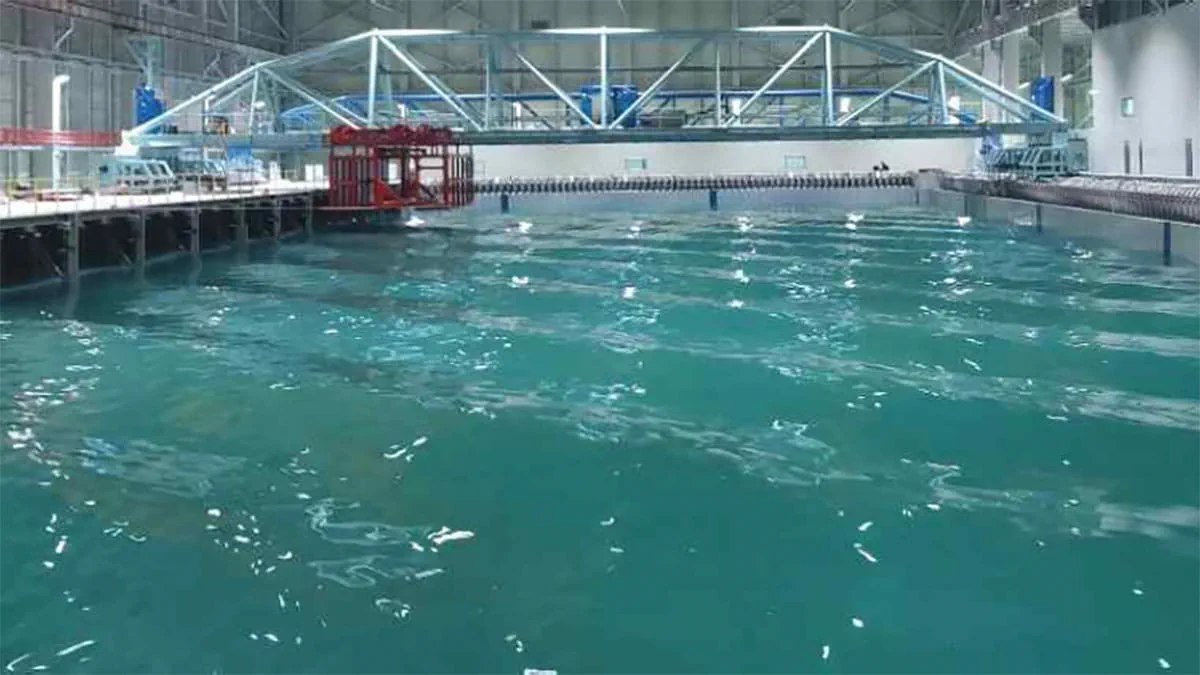Deep Sea Simulation
Marjan GOSP-4 structures to undergo state-of-the-art deep-sea tests

Global December 05, 2021
Aramco engineers use a scale model to help predict potential hazards in installing gas-oil separation plant.
When dealing with offshore projects of magnitude, Aramco does all it can to prepare for potential risks and unpredictable factors such as the weather.
On the Marjan Offshore Gas-Oil Separation Plant-4, considered the largest Aramco offshore structure to be built all at once, this means plenty of advanced deep-sea testing. Scheduled to be completed in 2025, plans are underway to ensure its implementation will be successful.
“For that reason, “Marjan Offshore GOSP-4 project team relies on advanced technologies to enhance the execution of the their GOSP-4 project,” said Badr M. Burshaid, manager of Marjan and Zuluf Increment Projects Department.
One of the ways Aramco does this is through simulation trials. Through simulation, the project team has been able to determine the techniques and ideas they needed to improve the offshore installation. The simulated currents, waves, and wind against the laboratory installation will ensure that the actual real-life installation is practical and robust.
Performed in an indoor offshore basin 6 meters deep and fitted with a movable floor and other features to allow the artificial creation of waves, currents, and winds, the simulation provides realistic sea conditions.
The test involves a dead weight being placed on the float-over vessel to simulate the installation, with sea-like conditions generated using pumps and then an external duct system helps avoid re-circulation of the currents. Waves are generated using generators on the opposite sides of the basin. The dead weight on the simulator represents an actual real-life platform weighing 25,000 metric tonnes and an ocean that is, in reality, 55 meters deep.
Performing the simulation prior to actual lifting and installation ensures that the necessary qualifications and numerical analysis are met to guarantee the safety of the installation, vessel, workers, and the environment.
The simulation helps the project team answer the what-happens-if question. When conducted properly, the simulation delivers a reliable background to the underlying theory via a process that is realistic and reflecting application to current, wave, and wind. The practical training will help in correcting potential flaws to the project, and having in place the right disaster and risk mitigation and recovery measures.
By Mohammed H. Al-Qarni and Abdullah S. Alshaye



